
Branching Path: James Galizio's Top 10 Games of 2020
It feels a bit cliche to say as much, but as tough as 2020 was as a year - it gave me the time to play more video games this year than ever before, including - for the first time! - enough games that I actually felt strongly about to make a proper personal top 10 list for the year. Usually, I don't like to number lists like these, but for a change, I decided to make the attempt, if only to better understand how I felt about the games on the list specifically, and how they compared.
I played many other games this year, but clearly most of them weren't actually released in 2020. I also didn't quite finish a few 2020 games that I feel would've otherwise made the list (like Death Stranding's PC port), but regardless - here we are! With the bonus of my honorable mention for my favorite game that I played that hadn't released in 2020:
Honorable Mention (Best non-2020 Game That I Played in 2020) - Xenoblade Chronicles X
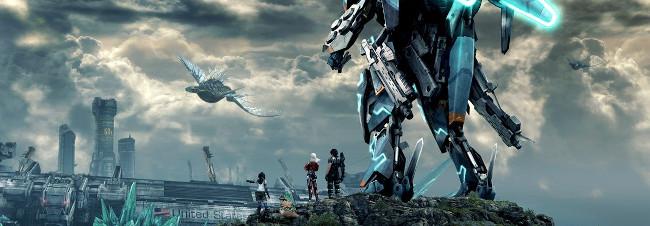
I don't know why I waited so long to play Xenoblade Chronicles X. Ok, so I know why I opted to finally get to it in 2020 - when fellow staff member Adam Vitale raved about his experiences with it on the Tetracast earlier in the year, I decided I'd put the game off long enough, and finally gave it a chance. Since this is only an honorable mention thanks to the game's actual release year, I'll keep it brief - not only was this the best game I played this year, it's quickly become one of my favorite games of all-time, potentially even taking the ultimate crown.
The world Monolith Soft crafted here is big, beautiful, and hard to believe ran on the Nintendo Wii U. The variety of character builds that you can deploy, and the scope of the content on display is immense; the level of thought and care put into the worldbuilding and side content astonishing. I wrote about it as much earlier, but I can only hope that the game can get another chance at life outside of the Wii U.
10) Hero Must Die, again.
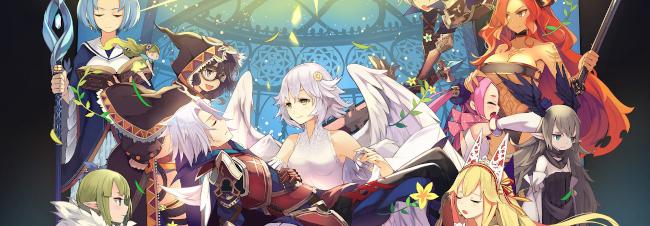
While Hero Must Die, again isn't the most content-rich, or even polished, game that I played this year - this enhanced port of the 2016 Vita remake of a 2007 feature phone game has a whole lot of heart, and an absolutely fascinating gameplay loop that feels like truly nothing else in the genre. Playing an RPG in reverse, where the main character starts at his strongest and only becomes weaker the further into the story you go, at first feels like a recipe for disaster - but instead, it ties into the games main theme - the impact that you have on the people around you, and what legacy you'll leave others to ponder over after you've died.
Figuring out how to progress each character's sidequests requires you to become intimately familiar with the whereabouts of specific items, the best order to tackle specific events, and which of the many party members you should recruit to accomplish that playthrough's goals. Here's a special shout-out to the adorable method for how the game scores your runs; with which characters opt to give a eulogy for you, and both how many people attend your funeral - and how many of them cried.
9) Bugsnax

I didn't have any expectations whatsoever for Bugsnax, and didn't even really have any intention of playing it this year. However, when I was lucky enough to get a PlayStation 5 at launch, I decided to give the game a shot since it came free with PlayStation Plus. I ended up enjoying my time with it so much, that I ended up popping the platinum trophy for it within just a handful of days!
Bugsnax is best described as a sort of mix between Ape Escape and Pokemon Snap. The ultimate goal of (most) of the game revolves around using a variety of tools to capture the titular creatures, with each character's quests asking for help with procuring specific critters for them to chow down on. Where the game truly shines is how it all comes together. You only have a small selection of tools, but the game makes use of all of them quite handily. If it's a flying Bugsnax? You'll want to place your trap on the catapult to snatch it right out of the air. Is it too big to be snatched up in either your trap or your net normally? Use a sauce to lure another Bugsnax into attacking it. All in all, Bugsnax was a much better time than I had anticipated.
8) Mad Rat Dead

I've always had a bit of a soft spot for Nippon-Ichi software - they're one of the few medium-tier Japanese developers left, and although their output isn't always perfect, they almost always attempt to create something new. Such was the case with Mad Rat Dead; taking cues from Crypt of the Necrodancer, players control Mad Rat in his quest to exact revenge on the human that led to his demise - thanks to the power of the "Rat Goddess", he's been given exactly that chance, but must move according to the beat of his heart.
This isn't the first time that rhythm games and platformers have mixed - Gamefreak's Harmoknight did as much back on the 3DS, but NIS's efforts on Mad Rat Dead haven't gone unappreciated. Mad Rat Dead features a fantastic art style, a killer soundtrack, and level design that somehow manages to tie everything together. It's an incredibly challenging platformer at the end of the day, but Mad Rat Dead feels almost emblematic of the reason I've grown to appreciate NIS. My only complaint is that I would avoid picking up the Switch version if you can, due to some unfortunate framepacing issues.
7) Risk of Rain 2
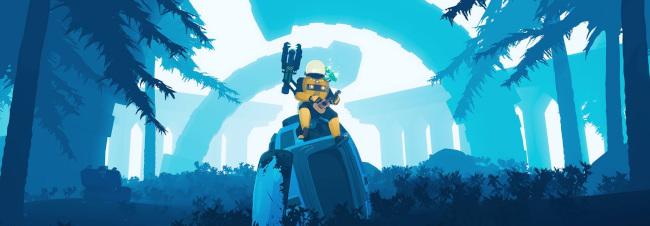
It feels weird to think that Risk of Rain 2 only came out this year, as the game was already in such a great state when it was initially released on Early Access back in 2019, but it's undeniable that the game's time in Early Access helped it immensely. Risk of Rain was always an old favorite of mine, so hearing that the sequel would ditch the 2D perspective for 3D left me worried - which is why it's so shocking that Hopoo have managed to so seamlessly translate the gameplay loop into 3D. Everything from character movement, to the level design, and even the evolution of the secrets from the first game have all seen a glow up with the transition to 3D.
I've spent dozens of hours playing the game with friends, and the promise of new content in the months and years to come means that it'll probably maintain its position in my Steam library for years to come. It's not often that a 2D series so effortlessly nails the transition to 3D, but I'm glad that Risk of Rain 2 took the chance - in this case, it paid off dividends.
6) Hades

As great as Risk of Rain 2 was, it had some impossible competition in the market this year - what more can be said about Hades? While it wasn't quite my favorite game that I've played this year, there's a reason that it has become so critically acclaimed. The way that Supergiant has meshed both story and gameplay is inspirational, and the sheer variety of context-specific voice lines helps really sell that the game is constantly moving forward, even if you feel like you're stuck in a bit of a slump. Combat is fast and responsive, the art style maintains the now-classic Supergiant charm,
I don't think I'm done with Hades, myself - although I managed to clear a few runs, I've still yet to roll the credits. I don't know when I'll make the time to get back to the game to see it through to the real end, but I know that when I'm ready - Hades will be waiting.
5) Doom Eternal

I thought that Doom 2016 was just alright, despite all of the acclaim that it garnered. The larger, more exploration-heavy levels in the first half, led way to what only felt like a series of combat arenas in the second. While Doom Eternal still falls into that trap to a degree, both the variety of locales on display, a more frantic gameplay loop, and the addition of more bespoke challenges and upgrades made the experience stand out to me much more than its predecessor did. I loved how the combat transformed into something akin to a character action game, where you would want to swap between each weapon depending on the enemy, and with a much larger emphasis on using the Slayer's full kit.
I know that many players found umbrage with these gameplay restrictions - axing player flexibility in the name of a more focused experience - but I'd much rather play a game that you could tell was tailored for a specific style of play, than one that doesn't feel like it has a clear vision of what it wants to be. For what it's worth, Doom Eternal is one of the best FPS that I've played in years.
4) Demon's Souls
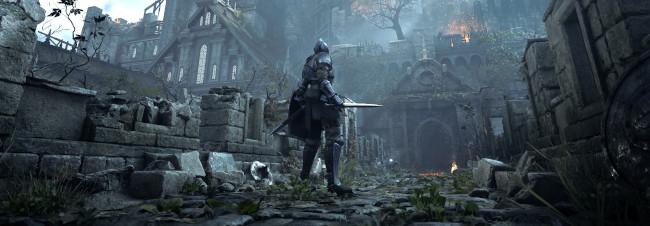
It's a happy little coincidence that Demon's Souls' remake released this year on PS5, quite literally a year after my playthrough of the PS3 original via RPCS3. What else is there to say, that hasn't already been said? Although I have some issues with specific changes (or lack of changes) that Bluepoint opted to include in their remake, they've still delivered what can only be described as the glowing example of how to upgrade a game for the new generation. Demon's Souls is breathtaking on PS5, and easily the most beautiful game that I've ever played. The level of fidelity on display here is something else, and makes me incredibly excited to see exactly what else this generation will be able to deliver for us.
As for the gameplay, there's really not much new to discuss. Demon's Souls remains a classic on that front, although some Boss AI could've seen a tweak here and there - looking at you, Maneater. While it's a shame that we didn't receive the 6th Archstone restored or anything like that, there's never been a better time to revisit Boletaria or to experience it for the first time if you never got the chance originally. If you can find a PS5, at least!
3) Nioh 2

I'd forgotten just how much I enjoyed Nioh. Back when the first game released in 2017, I went through with the effort to grab the Platinum trophy for it and everything - but somehow I just packed it away in the back of my mind that I really, really liked Nioh. I didn't originally plan on picking up Nioh 2, but around launch, I figured that the game was likely going to be lost within the crowd - wedged between Animal Crossing, Doom Eternal, and Final Fantasy VII Remake. The least I could do was pick it up to show some support for a series I had a soft spot for.
When I got to actually playing Nioh 2, I was surprised with just how the rather incremental changes that the game made to the formula resonated with me. Don't get me wrong - the improvements to enemy variety alone were probably enough to make the game worth it, but the inclusion of the new Yokai Realm and Yokai Abilities added depth to the combat that I wasn't really expecting. Combine that with what I'd say were much-improved boss battles, more engrossing level design, and an easier to follow and more personal story - Nioh 2 wasn't exactly the sequel I expected, but it's hard to argue that I wasn't happy with the result.
Nioh 2 is a great reminder that not every video game sequel needs to re-invent the wheel, sometimes all you need are a few small changes and improvements to make one worthwhile. Here's hoping more people get to experience the game with the upcoming PC and PS5 release in 2021!
2) 13 Sentinels: Aegis Rim
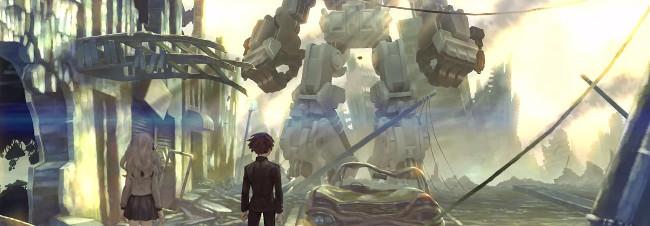
Besides being difficult to write about in the first place, I don't think there's anything that I specifically could add to the discussion on 13 Sentinels that hasn't already been said. Simply put, it's a masterpiece of storytelling and narrative design. The fact that players can have wildly different experiences with the order in which they view many of the game's events, it's a testament to the storytelling that it still manages to make sense and stick the landing with all of those different variables. 13 Sentinels is the type of storytelling that can only happen in an interactive medium like video games, and the developers over at Vanillaware completely knocked it out of the park.
Of course, as much as the story is what makes 13 Sentinels worth playing - that's not to say that the other aspects of the design aren't also worthy of praise. Vanillaware has more-or-less established themselves with a specific sort of watercolor art style, but 13 Sentinels is without a doubt the most impressive utilization of it yet. It's a breathtaking game to see in motion, and the amount of detail on display here is staggering. Similarly, although the RTS battle gameplay might take a side role compared to the story - there's still a lot to love here as well. It's a bit easy to break the difficulty over your knee, but I had a fantastic time with that portion of the game as well. 13 Sentinels is an important game for the medium, and you'd be doing yourself a disservice to ignore it.
1) Labyrinth of Galleria
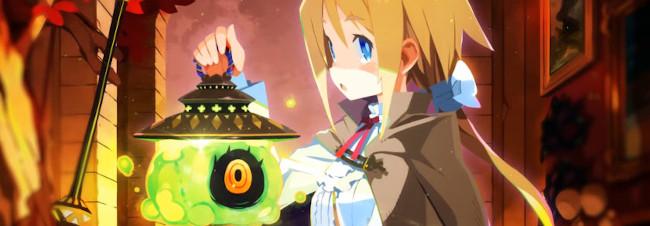
I was surprised by how much I'd ended up enjoying Labyrinth of Refrain: Coven of Dusk back in 2018. Before I ended up reviewing it, the game had been on my radar - I'm a big fan of DRPGs, and import impressions had told me that it was one to look out for, but I was still surprised to find out just how good it was for NIS's first attempt at the genre. The Coven system - the sheer breadth of party customization on display for players to contend with - and the dungeon designs were well enough on their own, but what really drew me to it all was the surprisingly touching story by the games ending. Going into the as-of-now Japan-only Labyrinth of Galleria, I was worried that lightning couldn't strike twice.
I think it's safe to say that Labyrinth of Galleria faced a troubled development, which makes the state of the release all the more relieving. Galleria expands on the dungeon-crawling chops and party-building aspects of Refrain, much as I'd expected it would, but what really blew me away was just how much better the story ended up being from Refrain's. It's a more personal tale, with a cadence that works quite differently to Refrain's. I strongly feel that Galleria's characters and themes will resonate with many players once it eventually gets a localization, and I can't be more excited to see more people discover the work that NIS and Tatsuya Izumi have accomplished here.
To say any more would be to spoil the pot, as I plan to write a full Import Review for the title in the coming weeks - needless to say, Labyrinth of Galleria isn't just a perfect swansong to my beloved PlayStation Vita, but also my personal Game of the Year.